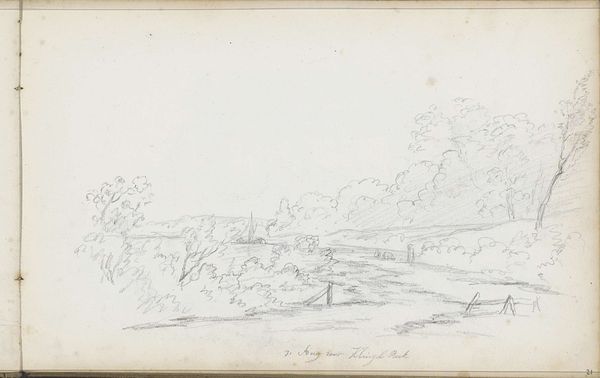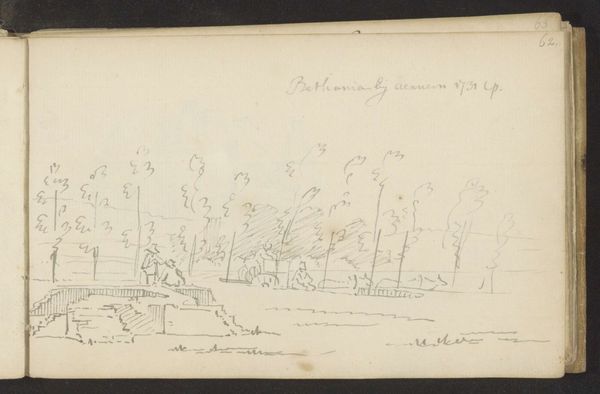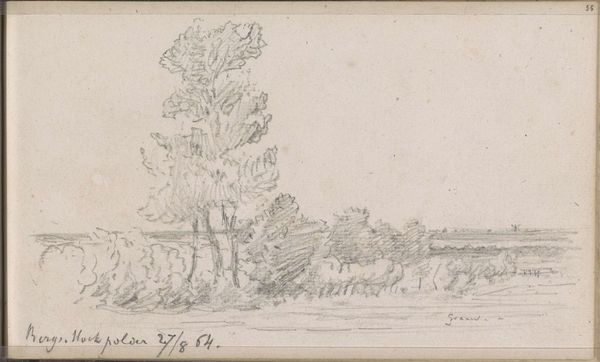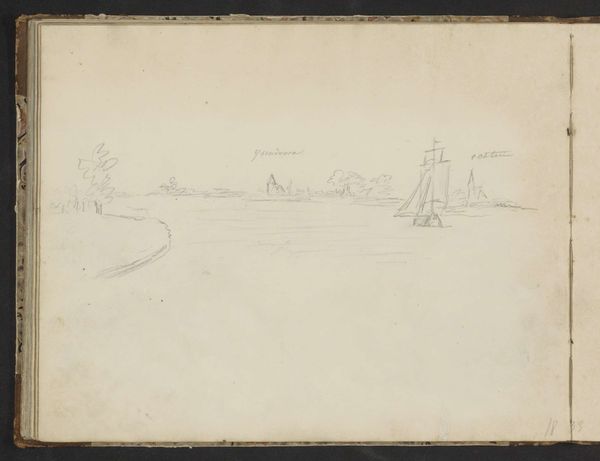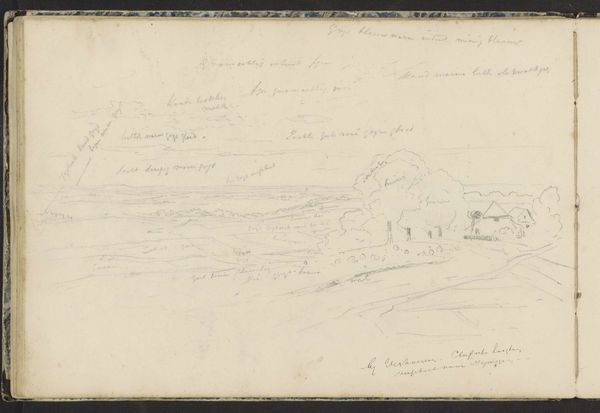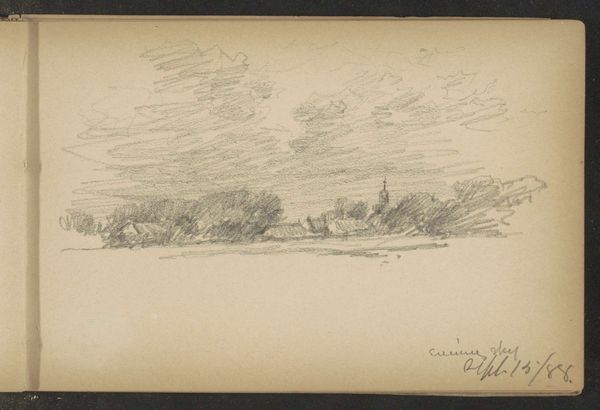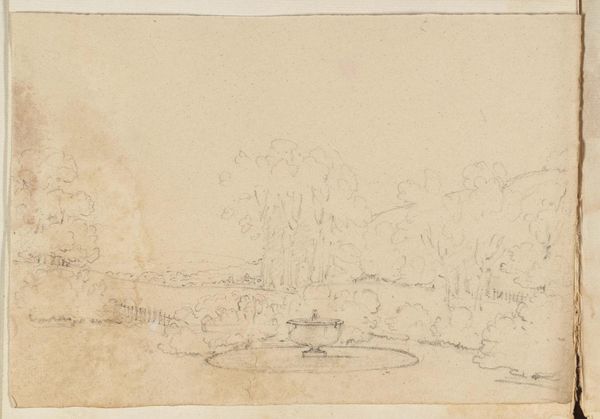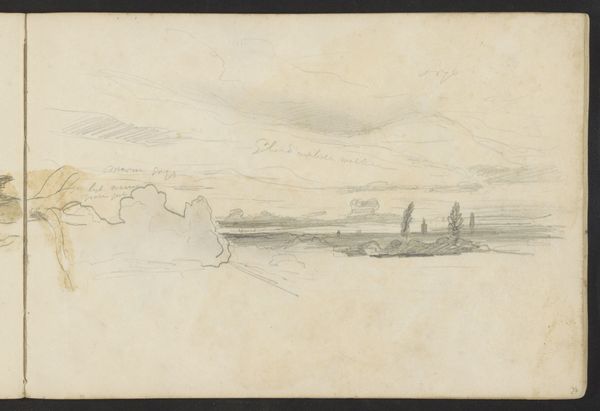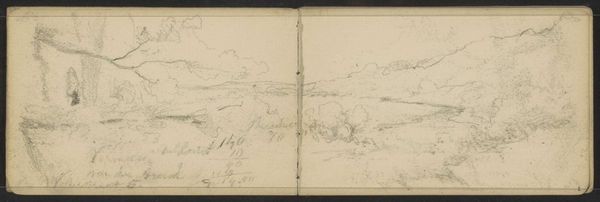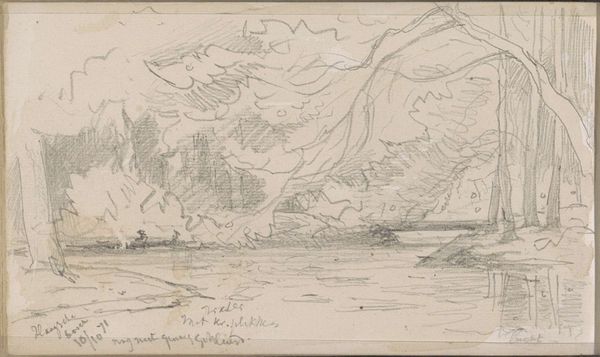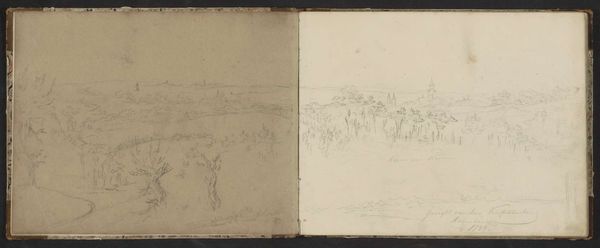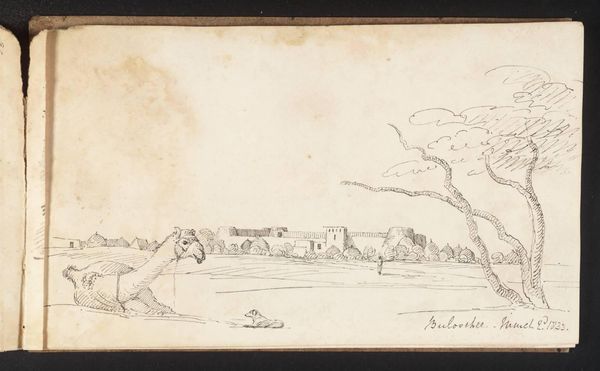
drawing, pencil
#
drawing
#
dutch-golden-age
#
pen sketch
#
landscape
#
pencil
Copyright: Rijks Museum: Open Domain
This graphite drawing, "Ruïne van kasteel Ter Horst," was rendered by Abraham de Haen the Younger in 1731. Notice how the skeletal remains of the castle, perched atop the gentle rise, dominate the scene. Ruins are a potent symbol, evoking melancholy and the transience of human endeavors, yet also the enduring power of nature. Consider the motif of ruins throughout art history, from Roman antiquities depicted in Renaissance paintings to the crumbling abbeys romanticized by the German painters. Ruins are not merely remnants of the past; they carry a psychological weight, a visual memento mori, reminding us of mortality and decay. The presence of grazing cattle in the foreground adds another layer to our meditation on the past. These gentle beasts offer a counterpoint to the crumbling walls, symbolizing the continuation of life amidst decay. It's as if the land reclaims what time has taken, a cyclical progression as the old makes way for the new. The motif of ruin and rebirth continues to evolve, resonating with our deepest fears and hopes.
Comments
No comments
Be the first to comment and join the conversation on the ultimate creative platform.
